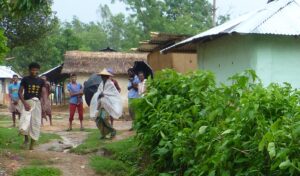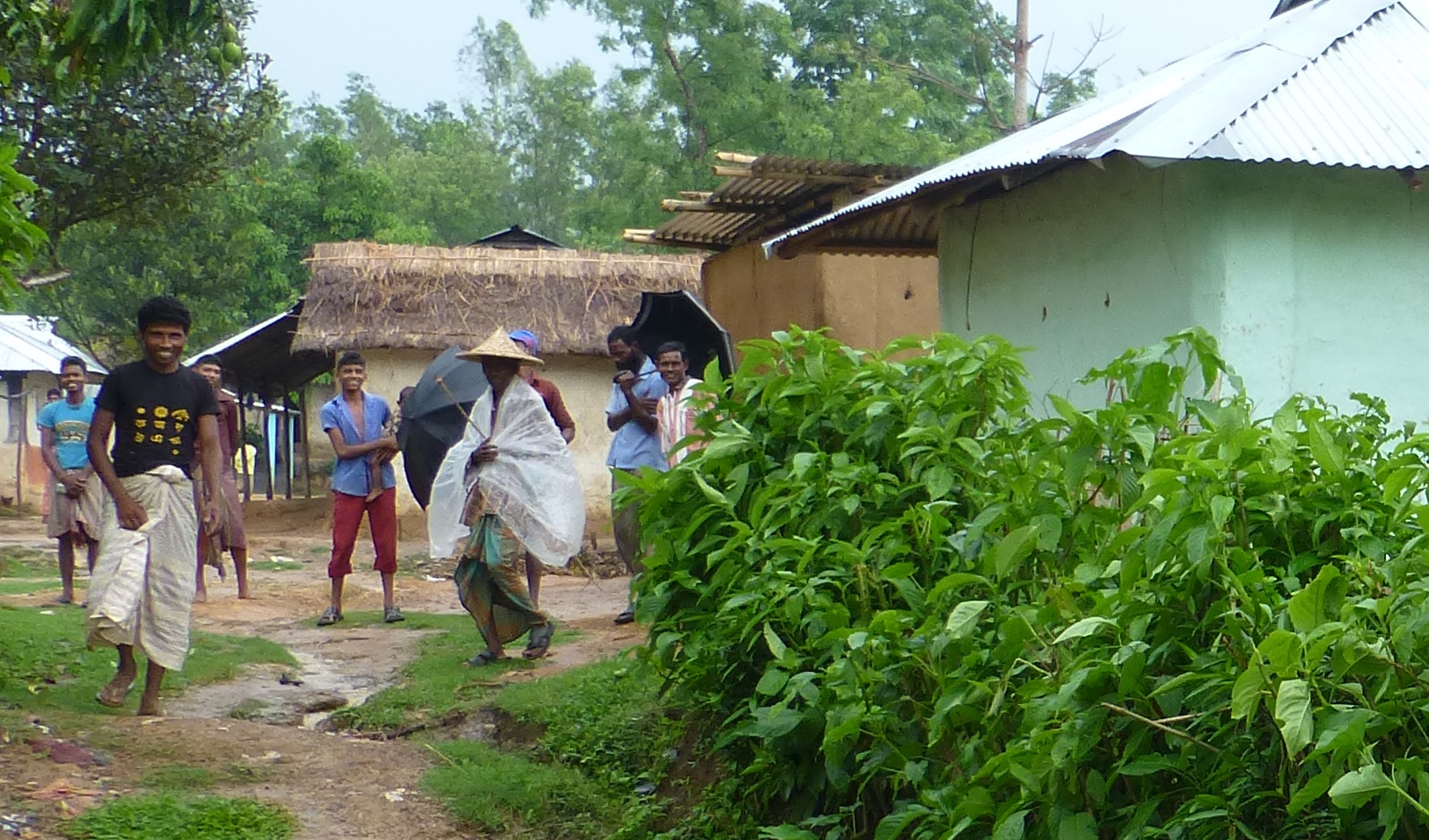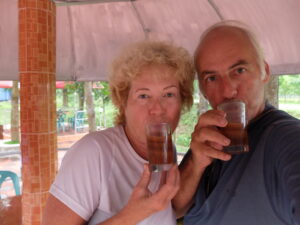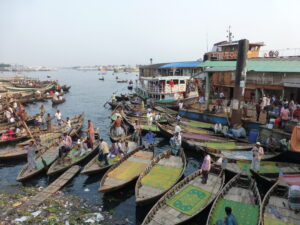
Here’s how we spent a very gracious hour in Bangladesh just outside Lawachara National Park, Srimangal.
We’re walking a road amid the cultivated fields of a small village. Rapidly slate grey clouds roll in, along with thunder and suddenly cold wind…a fierce rainstorm about to hit. We scamper for shelter under the eave of a shed at the edge of the village, but one man beckons us to follow him around a corner.
In a few seconds, he is inside his mud and brick home gesturing for us to come in. We followed into the dark. As our eyes adjust, we see that the whole place is about 10 x 20 feet, with a bed in one corner, a screen of palm leaves to the right of the entrance defining another space, likely a kitchen. On the wall opposite the door, there’s a makeshift shrine to Hindu gods, some inexpensively printed images along with some decoration. Though Bangladesh is mainly Muslim, many of these villagers are descendants of Hindu ancestors brought here by the British to work the tea plantations so plentiful in this area.
A host of young and middle age villagers peer in before our host shoos them off. One young man with perhaps a two year old child joins us, sits on a slight stool a few inches off the ground. Our host dusts off the bed for one of us to sit on, then squats on his own stool. He directs a second young man to leave; he returns in a minute with a sturdy wooden chair for me to sit in, though it seems quite out of place here.
We wait for some minutes and then the storm hits – as fierce, wind-blown and lightning-filled as we expected. Rain pours down the channels of the corrugated tin roof outside, turning into a fast-moving stream running down the lane next to his house. Two other young men, who seem related to our host, show up with umbrellas and sit down on two more stools. With gestures and broken English, they ask us if we want some tea. We didn’t want to bother them any more, and worried that tea making would require someone to go out in the storm again.
The new arrivals try to make conversation so we answer the typical questions everyone seems to learn in English: what country we come from, how we like Bangladesh. They then start to chew on some betel leaf, mixed with some small container of white cream it appears. Time passes.
They pull out their mobile phones, which struggle to connect in the storm. Our host offers another SIM card from his phone, but nothing seems to work. One of the young men takes a photo of the water streaming down the lane. The other searches his music for entertainment.
In about a half hour, a trio of soaking wet goats show up at the door. The homeowner yanks one of them inside, and chases the others away; he then ties his goat up next to the bed on. We all wait.
Occasionally the men inside the hut make some conversation, but mostly we sit quietly – as does the goat in the corner. After about an hour, the storm begins to relent and we get ready to leave. We thank them all, especially the man who saved us from getting soaked. Bye-byes, namaskars, hand-shakes for all.
We round the corner into the main lane out of the village, and turn back to salute the crowd gathered again to see the strangers in their midst.
(Also, for more pictures from Bangladesh, CLICK HERE to view the slideshow at the end of the Bangladesh itinerary page.)





This is awesome. Hope to see pictures of goat!
The goat unfortunately was camera-shy…and even refused to comment on this story.